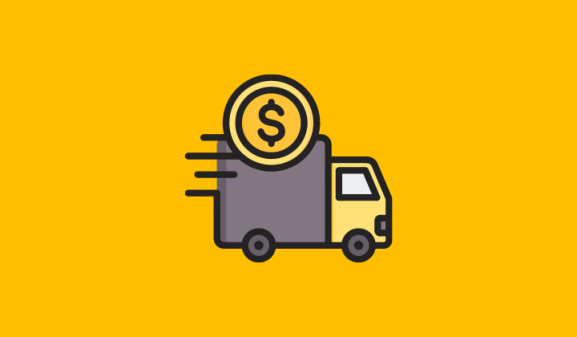Optimizing logistics expenses has become critical for businesses looking to achieve sustainable development and profitability in today’s cutthroat e-commerce environment. Businesses can obtain a competitive edge in the market and streamline operations by implementing cost-reduction methods. This article examines several crucial strategies for cutting logistics expenses and emphasizes the major advantages of doing so.
10 Strategies to Reduce Logistics Costs and Improve Efficiency
In today’s fast-paced e-commerce world, reducing logistics costs while increasing efficiency is essential. Here we present 10 effective strategies designed to streamline your supply chain and reduce costs. These actionable tips can change the way you manage your logistics, providing both immediate and long-term benefits.
1) Optimize Route Planning
Efficient route planning is a cornerstone of cost-effective logistics. By meticulously mapping out the most efficient paths for delivery vehicles, companies can significantly reduce mileage, fuel consumption, and ultimately, costs. This not only improves the speed and reliability of deliveries but also lessens the environmental impact of your logistics operations.
The key to successful route optimization lies in leveraging advanced GPS tracking and sophisticated route planning software. These technologies help identify the quickest and safest routes, taking into account real-time traffic conditions, vehicle capacity, and customer delivery windows. By minimizing unnecessary travel, you can ensure that your fleet operates at peak efficiency, reducing idle time and speeding up the overall delivery process.
Read Once! Benefits of Integrated IT Systems to Logistics Companies
2. Implement Technology Solutions
In the digital age, adopting technology solutions is vital for reducing logistics costs and enhancing operational efficiency. Logistics Management Software (LMS) serves as a powerful tool that centralizes control, streamlines processes, and improves communication within your logistics operations. This software typically offers features like inventory management, order processing, carrier selection, and real-time tracking, all of which contribute to a more cohesive and responsive logistics network.
The integration of such technologies not only simplifies management tasks but also provides valuable insights through data analytics. These insights can help you identify bottlenecks, predict future trends, and make informed decisions that optimize resource allocation and reduce expenses. By embracing digital transformation, your logistics operations can become more agile, responsive, and cost-effective.
Must Read: Tips to Reduce Your Supply Chain Costs
3. Regularly Audit Freight Bills
Regular audits of freight bills are crucial for ensuring that you are not overpaying for logistics services. Mistakes, such as double billing, incorrect freight classifications, and unnecessary accessorials, are not uncommon and can significantly inflate your logistics expenses if left unchecked.
Implementing a systematic approach to auditing can help you catch these errors early. Consider using specialized software that automates the comparison of billed amounts against contracted rates and service agreements. This not only reduces the manpower required for audits but also increases the accuracy and speed of the process.
Moreover, regularly auditing your freight bills strengthens your negotiating position with carriers. Armed with concrete data on discrepancies and consistent overcharges, you can demand better terms and ensure that future contracts are more favorable to your business.
Do you know? Benefits of Having a Logistics Mobile Apps for Your Business
4. Consolidate Shipments
Consolidating shipments is an effective strategy to maximize the efficiency of your logistics operations. By combining multiple smaller shipments into a single larger one, you can reduce the frequency of trips, thereby lowering transportation costs and minimizing carbon emissions. This approach is particularly beneficial for companies that deal with numerous small deliveries spread out over various locations.
To successfully consolidate shipments, careful planning and coordination are required. It’s essential to analyze shipment volumes, delivery schedules, and geographical distribution to determine the most effective consolidation strategy. Utilizing logistics software can aid in this analysis, providing the tools needed to schedule and manage consolidated shipments effectively.
Furthermore, consolidation can lead to better rates from carriers due to the higher volume of goods moved per shipment. This not only helps in reducing per unit transportation costs but also enhances negotiation leverage with freight carriers.
5. Negotiate with Suppliers
Negotiating with suppliers and carriers is a critical component of reducing logistics costs. By building strong, collaborative relationships with your logistics partners, you can secure more favorable terms that reflect the volume and consistency of your business.
When entering negotiations, come prepared with detailed data on your shipping volumes, frequency, and service needs. This information will strengthen your bargaining position, allowing you to argue for better rates based on your loyalty and the value you provide as a customer. It’s also beneficial to stay informed about market rates and the services offered by competitors; this knowledge can serve as a powerful negotiating tool.
Additionally, don’t hesitate to explore multi-year contracts if they offer significant cost savings. Long-term agreements can provide stability for both parties and often result in lower overall costs due to the commitment and volume guarantees they entail.
If you are Logistics Owner! Logistics App: Why It’s Necessary For Your Logistics Business?
6. Adopt Lean Inventory Techniques
Lean inventory techniques are all about minimizing stock levels to reduce storage costs while still being able to meet customer demands efficiently. This approach not only reduces the financial burden of maintaining large inventories but also decreases the risk of obsolescence and spoilage.
Key strategies in lean inventory management include just-in-time (JIT) delivery, which coordinates the arrival of goods closely with their need in production or sale. This minimizes the time that items spend in storage, reducing holding costs significantly. Implementing an effective JIT system requires precise coordination with suppliers and a reliable forecasting method to ensure that you do not run out of stock or over-order.
Another useful technique is the use of Kanban systems, which rely on visual signals to indicate when more stock is needed. This method helps maintain optimal inventory levels and supports continuous improvement in supply chain operations by aligning inventory with actual consumption rates.
7. Train Your Workforce
Investing in the training and development of your logistics workforce is key to improving overall efficiency and reducing costs. Well-trained employees are more adept at handling the complexities of logistics operations, from managing inventory to operating sophisticated logistics software. This reduces errors, enhances productivity, and ultimately lowers operational costs.
Training should focus on both the practical aspects of job functions and the adoption of best practices in logistics management. Consider implementing regular training sessions on new technologies, safety procedures, and customer service excellence. Encouraging continuous learning and improvement ensures that your team is always up to date with the latest industry standards and techniques.
Moreover, a skilled and knowledgeable workforce can better identify inefficiencies and suggest improvements. This proactive involvement can lead to innovative solutions that further reduce costs and enhance service quality.
8. Go Green to Save Green
Adopting environmentally friendly practices in logistics not only benefits the planet but can also lead to significant cost savings. Initiatives such as reducing packaging waste, optimizing transportation routes to minimize fuel consumption, and switching to more fuel-efficient or electric vehicles can decrease operational costs while enhancing your company’s sustainability profile.
One effective strategy is to implement a recycling program for packaging materials. By using recyclable and reusable packaging, you can reduce the costs associated with purchasing new packing materials and waste disposal. Additionally, eco-friendly practices are often looked upon favorably by consumers, potentially increasing customer loyalty and attracting new business.
Another approach is to optimize the energy efficiency of warehouses and logistic centers by installing smart lighting systems and energy-efficient appliances. These upgrades, although initially costly, pay off in the long run through reduced energy bills and may also qualify for government incentives for green business practices.
Also see! Updated Supply Chain Risk Management Strategies
9. Analyze and Adapt
Continuous improvement is vital in the fast-evolving logistics sector. By regularly analyzing performance data, companies can identify inefficiencies and adapt their strategies accordingly. This ongoing process of evaluation and adjustment ensures that logistics operations remain cost-effective and responsive to changing market conditions.
Utilize advanced analytics tools to gather data on everything from fuel consumption and route efficiency to delivery times and customer satisfaction. This data provides invaluable insights that can help refine your logistics strategies. For instance, you might discover that certain routes consistently underperform or that specific products could be stored more efficiently.
Adapting based on these findings might involve reevaluating supplier contracts, tweaking delivery schedules, or investing in new technologies. Each of these decisions should be driven by concrete data, enabling your business to stay ahead of the curve and maintain a competitive edge in logistics management.
10. Develop a Mobile App
In today’s digital world, developing a mobile app specifically for your logistics operations can offer a competitive advantage by enhancing real-time communication and operational efficiency. A well-designed logistics app allows for the tracking of shipments in real-time, streamlined communication between drivers and dispatchers, and easier access to important documents and delivery schedules.
Discussing the Logistics App Development Cost, while there is an initial investment involved, the long-term benefits include reduced paperwork, quicker response times to logistics challenges, and improved customer service. An app can also provide analytics features that help you understand delivery routes better and optimize them for increased efficiency.
Additionally, a mobile app can empower drivers with tools for better route management, instant communication, and problem-solving, all of which contribute to a more efficient logistics operation. Embracing mobile technology in logistics is no longer just an option but a necessity in a technology-driven marketplace.
Want to know? How Much Does It Cost To Promote A Mobile App?
Final Words
In this article, we’ve explored ten fundamental strategies to reduce logistics costs and enhance efficiency within your operations. From optimizing route planning to leveraging the power of technology with Logistics Management Software, and even considering the development of a dedicated mobile app, these methods offer comprehensive solutions tailored to modern logistics demands.
Related FAQs
FAQs on Reducing Logistics Costs
What is the quickest way to reduce logistics costs?
Optimize delivery routes and consolidate shipments to reduce transportation expenses immediately.
Can technology really help reduce logistics costs?
Yes, implementing logistics management software can streamline operations, improving efficiency and reducing costs.
How often should I audit my freight bills?
Regular audits, at least quarterly, are recommended to ensure you are not overpaying due to errors or overcharges.
Is it expensive to develop a logistics app?
The cost can vary, but investing in a logistics app typically pays off by improving efficiency and reducing operational costs.
What are the benefits of training the logistics workforce?
Training enhances skill levels, reduces errors, and improves efficiency, all of which contribute to lowering overall logistics costs.
Must Read About Trending Tech Blogs
- Cryptonewzhub.com Internet – Detailed Guide
- How Frables Epix Net is Changing Digital Entertainment
- Shortlinkstop.online: Power of Streamlined Link Management
- The Role of Trendzguruji.me Awareness in Shaping Digital Trends
- MyUday.Lupin.com Login: Detailed Instructions for Hassle-Free Access
- Discovering Leomorg: A Deep Dive into Digital Creativity and Cultural Exploration




Pingback: 10 Tips to Optimize Delivery Route Planning » Apps Insight
Pingback: 10 Smart Strategies to Reduce Transportation Costs 2024